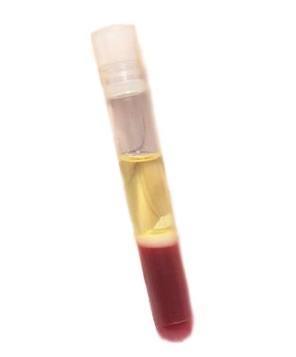Can PRP be used in Hair Restoration?
 There have been several times in the recent past when we have been asked about the possible advantages of PRP (platelet-rich plasma) in combating hair loss. While PRP is a promising idea, there is not enough scientific evidence to support the use of PRP for hair loss patients as discussed in one of our previous blog posts.
There have been several times in the recent past when we have been asked about the possible advantages of PRP (platelet-rich plasma) in combating hair loss. While PRP is a promising idea, there is not enough scientific evidence to support the use of PRP for hair loss patients as discussed in one of our previous blog posts.
Dr. Carlos Puig, a leading hair restoration doctor, has been conducting hair restoration research focusing on PRP and its possible use in hair restoration. Dr. Puig recently had an article published in Cosmetic Town Journal where he discussed his findings. In the article linked to below, Dr. Puig stresses that the interesting thing about PRP is nobody is really sure if it does or doesn’t work. At this point in time, only the theory behind the use of PRP may work.
One of the reasons there is a lack of solid scientific evidence is the fact that multiple types of PRP are being manufactured across the world. There is not a consistent standard upon how to measure the effects of PRP and there has not been a study to see which manufacturing method shows the best results. According to Dr. Puig, “there is a lot of hype and a lot of talk, but the reality is there is very little science.” Having said that, Dr. Puig is confident there are reasons to believe that PRP might be an effective treatment option at some point in the future.
One of the reasons Dr. Puig is optimistic about the future applications of PRP for treatment of hair loss relates to studies on wound healing. The cytokines and growth factors that help the human body in the process of wound healing function in a similar manner to what we see in hair cycling. The platelets are filled with the growth factors that activate and initiate the hair cycle. Wound healing is driven by the growth factors that also handle the turning on and off of the hair follicles. This theory means that the platelets will turn on the stem cells and not just stimulate hair.
Having said that, Dr. Puig points out there might be other factors besides what is present in the PRP to turn the hair on and off. The fact that the treatment doesn’t work on all people is proof that more answers need to be discovered before PRP for hair restoration becomes a more mainstream treatment option. For more insights into PRP, including a test study involving PRP and a placebo group as well as manufacturing options and costs, please read Dr. Puig’s recent Cosmetic Town Journal article, PRP for Hair Restoration.


